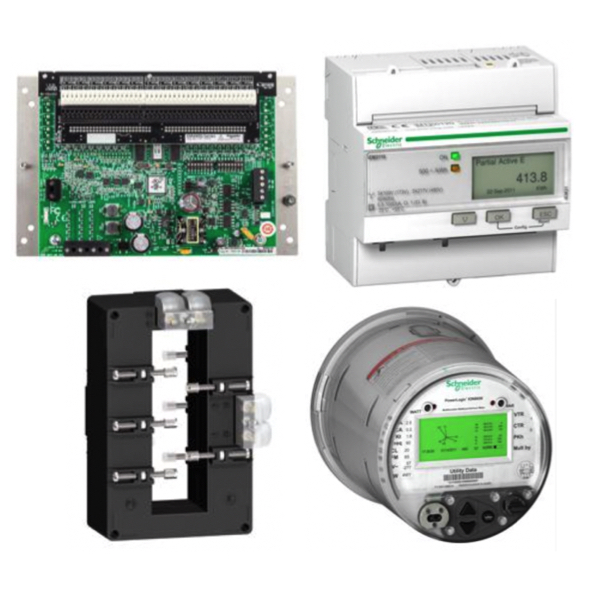Energy & Power Measurement

RSP Supply carries a complete range of energy and power measurement solutions designed to support accurate monitoring and control in industrial and commercial electrical systems. Our selection includes current transformers, power transducers, and power measurement instruments used to measure electrical parameters such as current, voltage, power, and energy consumption. These devices play a critical role in improving efficiency, maintaining system reliability, and supporting safe electrical operation.
Current transformers (CTs) are essential for safely measuring high current levels by stepping down large currents into standardized secondary outputs; typically 5A or 1A, suitable for meters, relays, and control equipment. This process protects sensitive electronics while ensuring accurate data for power measurement instruments and monitoring platforms.
Current and power transducers act as an interface between electrical power systems and monitoring or control equipment. By converting electrical signals into standardized analog or digital outputs, power transducers provide real-time measurement data while maintaining electrical isolation. These devices are commonly used for powering measuring devices, integrating meters into automation systems, and delivering reliable feedback for energy management, diagnostics, and system optimization.
FAQs
Q: What is the difference between a current transformer and a current transducer?
A current transformer (CT) steps down high current levels for safe measurement, while a current transducer converts current signals into standardized outputs (e.g., DC signals) for control and monitoring systems.
Q: How is electricity measured in terms of power and usage?
Electric power is measured in watts (W) or kilowatts (kW), while electricity usage over time is measured in watt-hours (Wh) or kilowatt-hours (kWh). Utility meters record this energy use for monitoring and billing purposes.
Q: How do energy meters differ from power meters?
Energy meters measure total energy usage (kWh), while power meters track instantaneous power, including active and reactive power, for performance analysis and load balancing.
Q: Why is energy measurement important in industrial systems?
Accurate measurement helps identify inefficiencies, reduce downtime, and lower operating costs through predictive maintenance and data-driven energy management.
Q: Can these devices integrate with automation or SCADA systems?
Yes, most modern meters, transducers, and transformers are equipped with Modbus, BACnet, or Ethernet communication protocols for seamless integration into SCADA and energy management systems.
Why Buy Energy & Power Measurement Devices from RSP Supply
RSP Supply offers a trusted selection of current transformers, power transducers, and power measurement instruments for industrial and commercial energy monitoring. Customers rely on RSP Supply for dependable product availability, clear technical guidance, and proven measurement solutions that support safe, efficient, and reliable power system operation.

